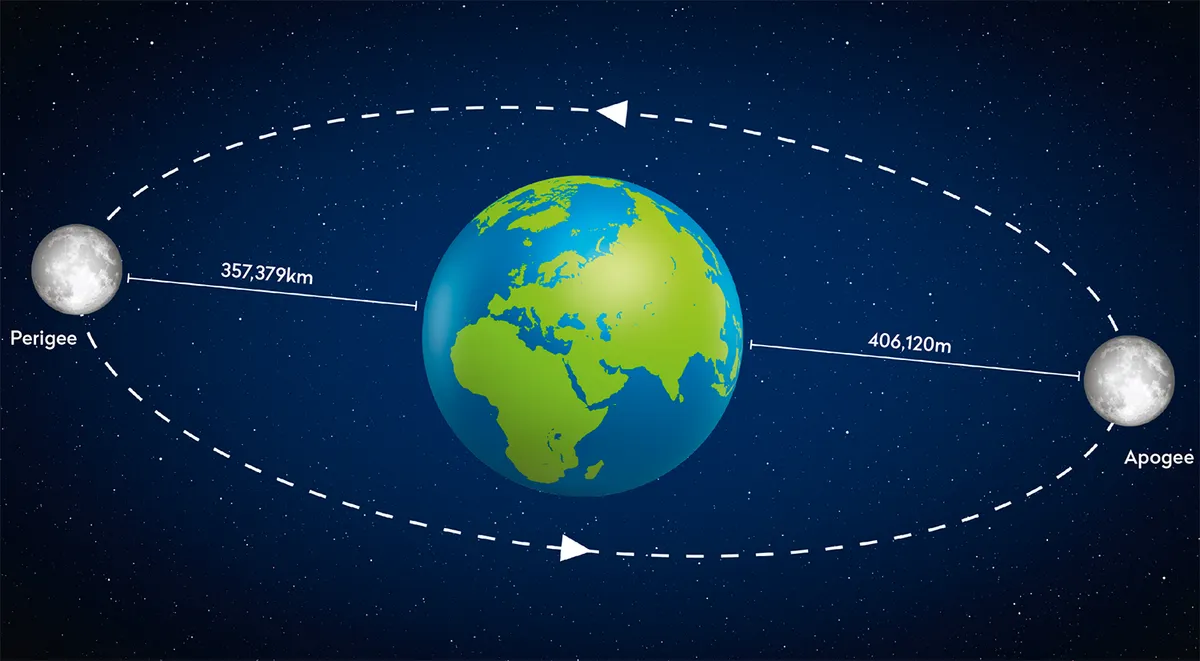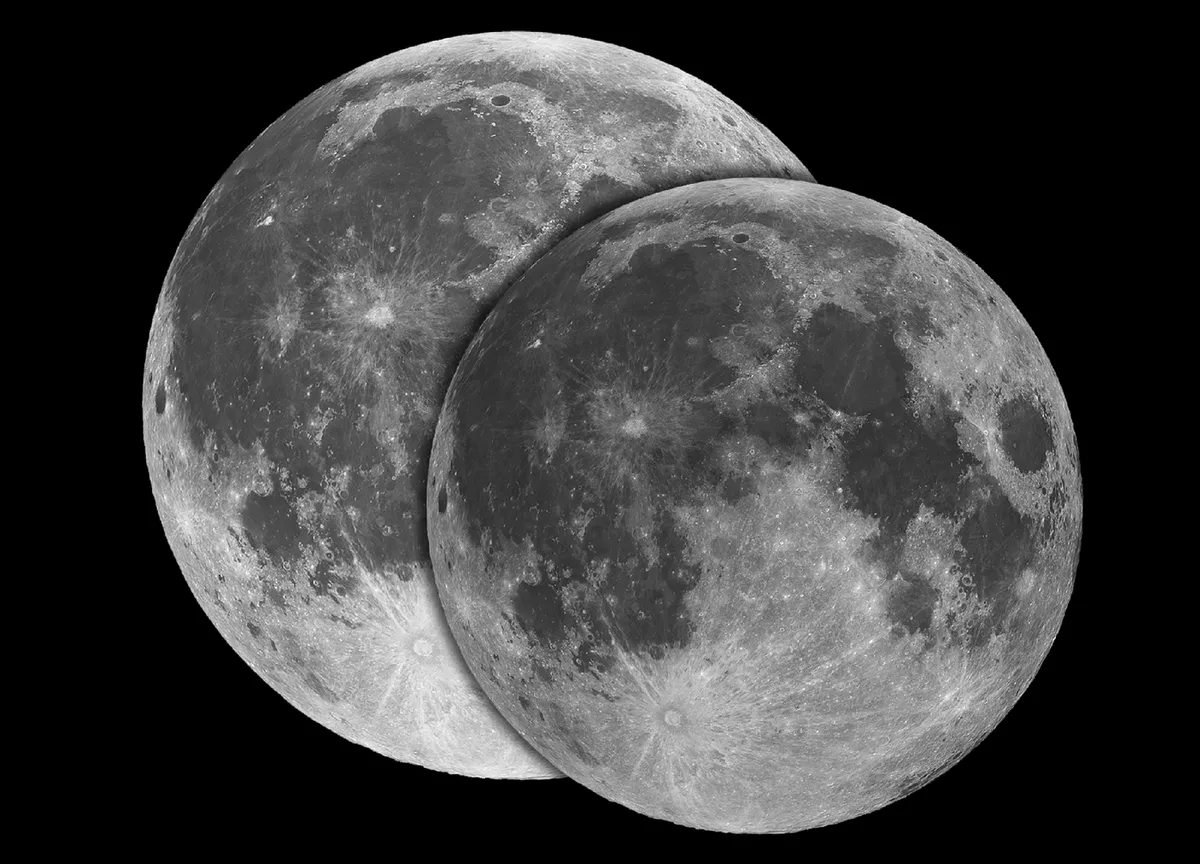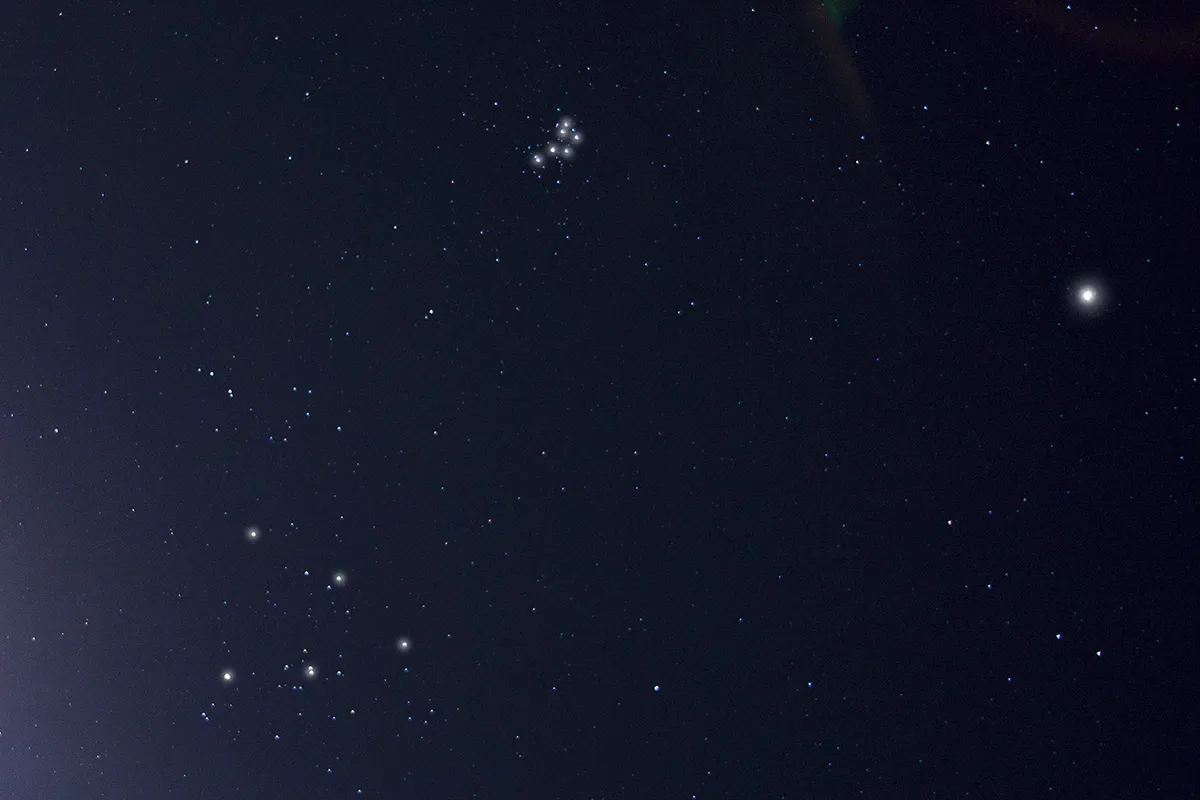Everyone loves a supermoon.
The thought of a bigger, brighter full Moon rising above the horizon and striking us with its startling, serene beauty is enough to get anyone outside and looking up at the night sky.
Tonight, 7 October 2025, the first of three supermoons we'll get to see in 2025 rises in the east, and climbs higher and higher as midnight approaches.
In fact, the view gets better as we reach midnight and into the early hours. Below we'll reveal why.
Get weekly stargazing advice by signing up to our e-newsletter and subscribing to our YouTube channel

Supermoon explained
A supermoon is simply a full Moon that's closer to Earth than other 'regular' full Moons.
The reason for this is that the Moon's orbit around Earth isn't circular: it's elliptical, or slightly oval-shaped.
That means sometimes the Moon is closer to Earth than at other times.

And, should it need pointing out, things appear bigger when they're closer to us!
The true astronomical term for a 'supermoon' is a 'perigee Moon', because 'perigee' describes the point when the Moon is closest to Earth in its orbit.
'Apogee' is the opposite, when the Moon is farthest from Earth in its orbit.

A supermoon may appear 14% bigger and 30% brighter than a regular full Moon, although in truth the difference is imperceptible to the naked eye.
You're unlikely to look at the Moon and notice that it's a supermoon.
If you do spot the Moon rising above the horizon tonight, it may indeed look massive, but that's more likely down to a well-known optical effect known as the Moon illusion.
This strange effect occurs when any of the monthly full Moons is close to the horizon, and isn't unique to supermoons.

Observing tonight's supermoon, hour by hour
Tonight, the supermoon will rise in the east, just as the Sun is setting in the west.
This is a nice reminder of why we get a full Moon: the Sun and the Moon are in opposite parts of the sky, meaning the entire Earth-facing side of the Moon is fully lit by sunlight.
The Moon will rise around 18:30, with the exact time depending on your location.

By the time the sky is properly dark, the Moon will be climbing higher over the eastern horizon.
When the Moon is in the east, bright planet Saturn will be in the southeast.
If you were out observing the Moon last night, 6 October, you may have seen Saturn to the right of the Moon.

Tonight, 7 October, the Moon and Saturn are further apart, the Moon having tracked eastwards across the sky, compared with the previous evening.
As the full Moon approaches the southeast before midnight, you should now be able to see the Pleiades and Hyades star clusters in the east.
These are two of the easiest star clusters to see with the naked eye, but a pair of binoculars will give you a closer look.
The Pleiades appears like a mini 'Plough', and consists of bright blue stars surrounded by an ethereal blue glow. Through binoculars, it's quite spectacular.
The Hyades is marginally trickier to see than the Pleiades, but is easily-spotted because it looks like a sideways 'V' shape.

You'll also notice the bottom of the Hyades punctuated by Aldebaran, a bright orangey star, and the brightest star in the constellation Taurus.
If you can stay up past midnight, approaching 01:00 on Wednesday morning, you should be able to see the constellation Orion rising above the horizon in the south-southeast.
And to its left, the bright planet Jupiter, which is currently beautifully bright, and one of the best planets to see in October 2025.
By now, the full Moon is in the southern part of the sky, and is making its way over to the western horizon, where it will set as the Sun is rising in the east.
If you've enjoyed looking at some of the targets we've described above like Saturn, the Pleiades, the Hyades, Orion and Jupiter, keep observing them throughout October.
They'll begin to get easier to see as the Moon begins to get thinner and thinner after full Moon, its bright glare lessening and making the sky much darker for stargazing.
Share your stargazing observations and images with us by emailing contactus@skyatnightmagazine.com

